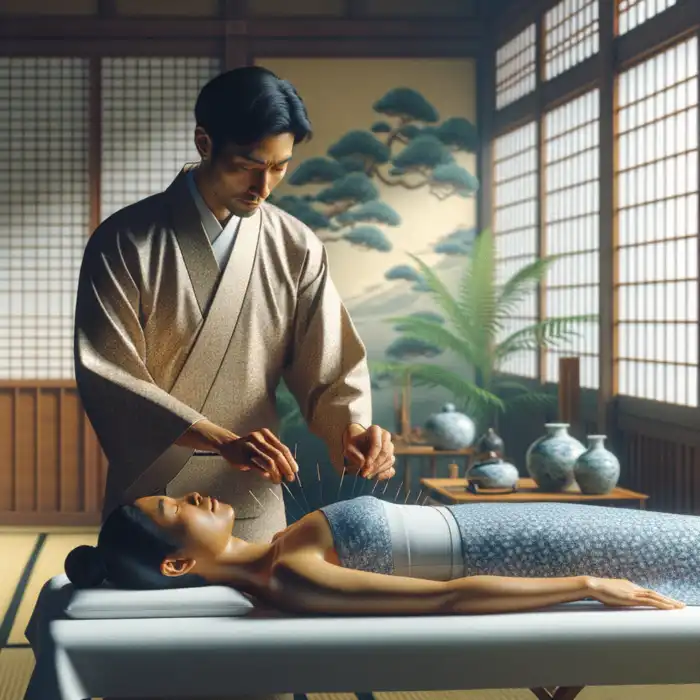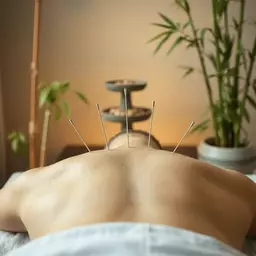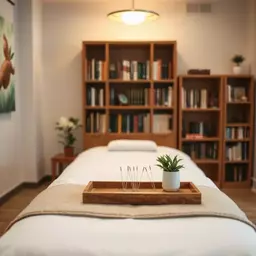Japanese Acupuncture
- Needle Type: Finer needles for comfort
- Philosophy: Subtle stimulation of energy
- Insertions: Shallow for less discomfort
- Diagnosis: Greater emphasis on palpation
Subscribe to get the latest insights and updates straight to your inbox.
Posted on: 2025-04-10
By: Kaiya Whitmore
Did you know that the gentle nature of Japanese acupuncture has attracted a growing number of individuals seeking holistic wellness? As this ancient practice evolves, its unique techniques and philosophies offer profound insights for both practitioners and patients alike.
Japanese acupuncture offers unique characteristics that differentiate it from Chinese practices. Below are essential comparisons highlighted in a visual format.
Japanese acupuncture is a rich and fascinating field that blends tradition with a unique understanding of the body's energy. Unlike its counterparts in other cultures, this practice carries profound cultural significance. It emphasizes a gentler approach, focusing on the patient’s comfort and connection to their own body. As an acupuncturist, I’ve found that understanding these nuanced techniques can greatly enhance treatment outcomes.
At its core, Japanese acupuncture is about more than just needles; it's about creating a harmonious experience for the patient. This approach deeply respects traditional philosophies while adapting techniques for modern wellness. The practice often incorporates mindfulness and subtlety, which can make a significant difference for those who are new to acupuncture. For a broader understanding of acupuncture's benefits, explore this article on insights on acupuncture benefits.
What truly sets Japanese acupuncture apart is its focus on the individual's energy flow and emotional state. Practitioners take the time to build a relationship with their patients, allowing for tailored treatments that address specific needs. This connection becomes vital in fostering a supportive healing environment.
While both Japanese and Chinese acupuncture share common roots, there are key differences worth noting. Here are some distinctions that make Japanese acupuncture unique:
These differences highlight how Japanese acupuncture is tailored to meet the needs of its patients—an aspect I’ve seen reflected in my own practice at Acupuncture Perspectives. To learn more about the cultural context of acupuncture, read our article on cultural perspectives on acupuncture practices. Each approach offers its unique benefits, but the gentle nature of Japanese acupuncture often appeals to individuals seeking a holistic experience.
One of the hallmarks of Japanese acupuncture is the use of finer needles, which allows for a more delicate approach to treatment. These needles are typically thinner than those used in Chinese acupuncture, making them less intimidating for first-time patients. In my experience, this can lead to a more relaxed atmosphere and an enhanced sense of safety.
Additionally, Japanese techniques often involve shallow insertions, minimizing discomfort while still effectively stimulating energy points. This method encourages patients to feel at ease during their sessions, allowing for greater receptivity to healing. Many patients have mentioned how this gentler approach makes for a more enjoyable experience.
Another unique aspect of Japanese acupuncture is the use of a traditional tool called the teishin, a smooth, metallic instrument used in non-invasive treatments. This tool allows practitioners to apply pressure and stimulate acupuncture points without the need for needles. I’ve found that this can be especially beneficial for patients who are anxious about needles or for children.
The teishin's application is versatile, providing a gentle yet effective means of treatment. It embodies the Japanese philosophy of care—focusing on the patient’s comfort while still promoting healing. Patients often appreciate the option of non-invasive techniques, and I’ve seen it lead to successful health outcomes.
If you’re considering trying Japanese acupuncture, remember that communication with your practitioner is key. Be open about your comfort levels and any past experiences with acupuncture. This dialogue will allow them to tailor the treatment to your unique needs, enhancing your overall experience and effectiveness of the session.
Japanese acupuncture, often considered a gentle approach, is distinguished by its emphasis on patient comfort and tailored treatment. Unlike some other acupuncture styles, it typically utilizes finer needles and techniques that focus on shallow insertions. This method not only enhances relaxation during treatment but also aims to harmonize the body's energy without causing discomfort. For more on the global variations in acupuncture, see our piece on global perspectives on acupuncture.
Furthermore, the philosophy behind Japanese acupuncture centers around the individual's energy flow and the subtle adjustments that can be made to restore balance. This holistic view encourages a deeper connection between patient and practitioner, allowing for a more personalized healthcare experience. At Acupuncture Perspectives, we believe that these defining features make Japanese acupuncture particularly special.
Yes, Japanese acupuncture has specific techniques designed for children, with Shonishin being one of the most notable. This gentle approach utilizes non-invasive methods to stimulate points without the need for needle insertion, making it ideal for young patients. Through gentle tapping and stroking, practitioners can effectively promote health and wellness in children.
Parents often express relief knowing that these methods are safe and effective, providing a nurturing path for their little ones’ health. By embracing these specialized techniques, practitioners can cater to the unique needs of children, helping them thrive while alleviating common ailments.
Within the realm of Japanese acupuncture, there are distinct styles that practitioners may adopt, with Toyohari and Kiiko Matsumoto leading the way. Toyohari practitioners focus on the subtle energy pathways of the body, providing a unique perspective in treatment that emphasizes the connection between the mind and body. Their detailed approach helps in addressing complex conditions effectively.
On the other hand, Kiiko Matsumoto's style is characterized by its intuitive diagnostic techniques and a focus on patient feedback. This enables practitioners to adjust treatments in real-time, ensuring that care is always aligned with the patient’s current state. To see how acupuncture fits into Western medical practice, take a look at this post on acupuncture's role in Western medicine. Both styles enrich the landscape of Japanese acupuncture, offering varied approaches that can cater to diverse patient needs.
In recent years, there has been a fascinating convergence of traditional Japanese acupuncture techniques with contemporary medical knowledge. This modern adaptation enhances the effectiveness of treatments, allowing practitioners to incorporate evidence-based practices into their approach. As someone who is passionate about holistic health, I find it exciting to witness this evolution!
For instance, practitioners might utilize recent findings in neuroscience to better understand pain mechanisms, refining their treatments to be more effective than ever. By blending ancient wisdom with modern insights, we can unlock greater healing potential for our patients.
To illustrate the impact of Japanese acupuncture, I’d love to share some real-life applications and testimonials from patients. One patient, Jenna, a busy mom struggling with anxiety, found immense relief through tailored treatments that included gentle needling and Shonishin techniques for her child. Hearing her story was a reminder of how impactful this practice can be!
Another case involves Tom, an athlete who turned to Japanese acupuncture for sports recovery. By focusing on palpation techniques and precise needle placements, he was able to reduce recovery time significantly. For more inspiring stories, read our article: Healing Through Acupuncture: Real Stories. Testimonials like these not only build credibility but also help others realize the potential benefits of exploring Japanese acupuncture.
Kanpo, or Japanese herbal medicine, plays a significant role in complementing acupuncture treatments. By integrating herbal remedies with acupuncture, practitioners can enhance therapeutic outcomes and address a wider array of health issues. This holistic approach embodies the essence of Japanese medical practices, where both acupuncture and herbal medicine work in harmony.
For example, a practitioner might recommend specific herbal formulas alongside acupuncture sessions to address digestive issues. This dual approach not only aids in faster recovery but also empowers patients with a comprehensive strategy for their health. At Acupuncture Perspectives, we believe that understanding these connections fosters a deeper appreciation for the art of healing.
Here is a quick recap of the important points discussed in the article:
Japanese acupuncture distinguishes itself through its emphasis on patient comfort, utilizing finer needles and shallower insertions than other styles. It prioritizes a personalized approach, focusing on the patient's individual energy flow and emotional state.
Yes, Shonishin is a specialized, needle-free technique used in Japanese acupuncture for pediatric care. It employs gentle tapping and stroking to stimulate acupuncture points.
Two prominent styles are Toyohari, focusing on subtle energy pathways, and Kiiko Matsumoto, emphasizing intuitive diagnosis and real-time treatment adjustments.
Modern adaptations blend traditional techniques with evidence-based practices and contemporary medical insights, enhancing treatment effectiveness and understanding.

 Acupuncture, an ancient practice with roots in Traditional Chinese Medicine, has transcended cultura
Acupuncture, an ancient practice with roots in Traditional Chinese Medicine, has transcended cultura
 As the demand for alternative therapies grows, the need for well-trained acupuncturists becomes para
As the demand for alternative therapies grows, the need for well-trained acupuncturists becomes para
 As global health trends evolve, ancient practices like acupuncture are finding their place in modern
As global health trends evolve, ancient practices like acupuncture are finding their place in modern